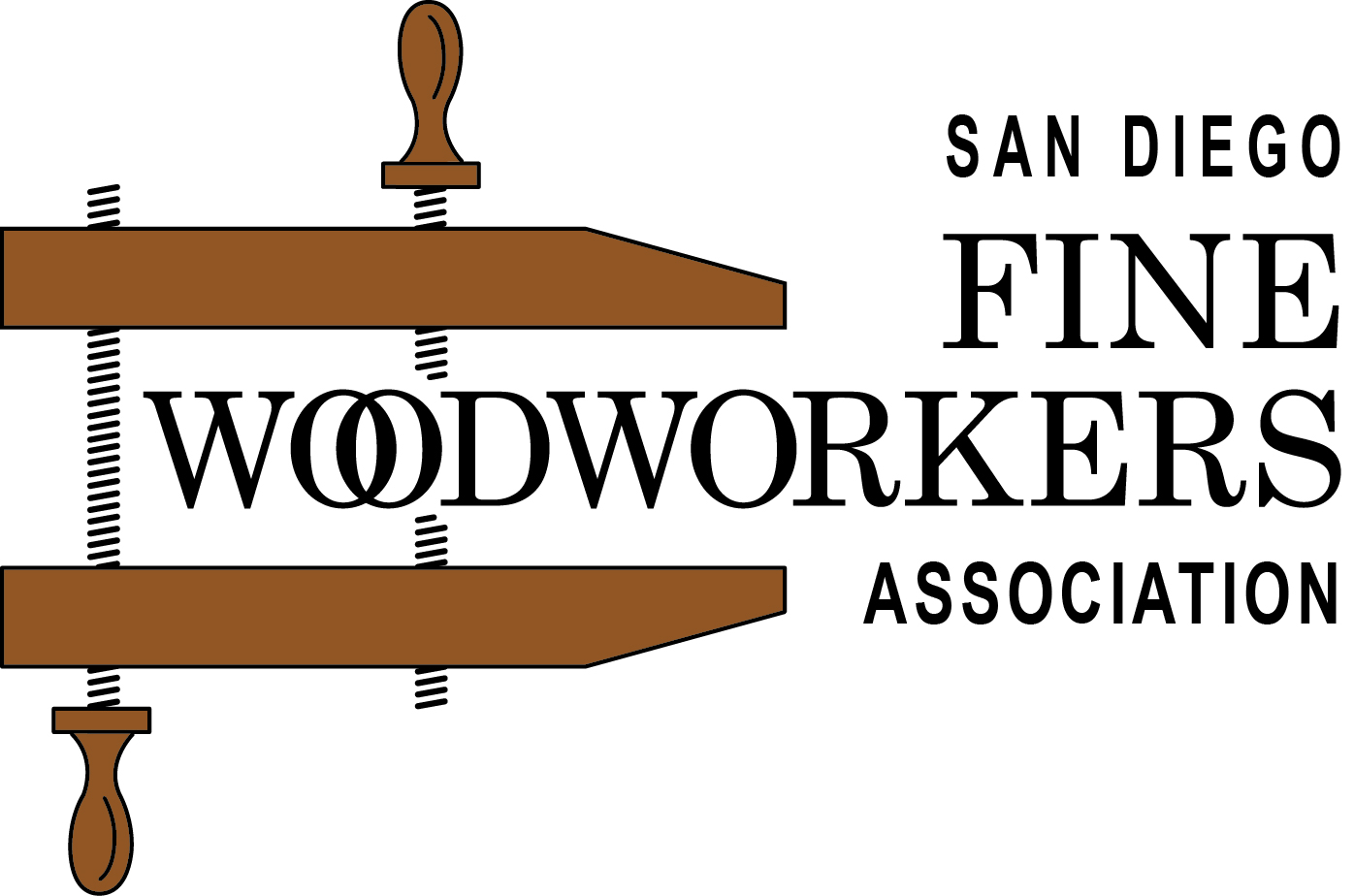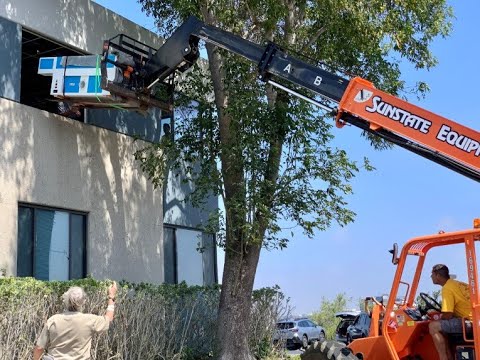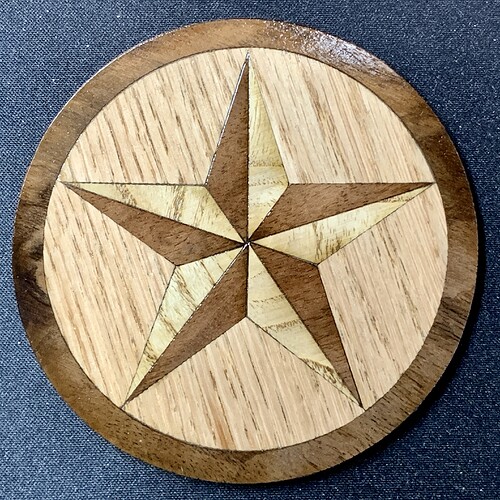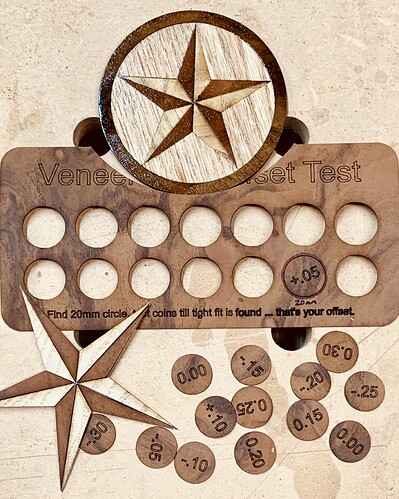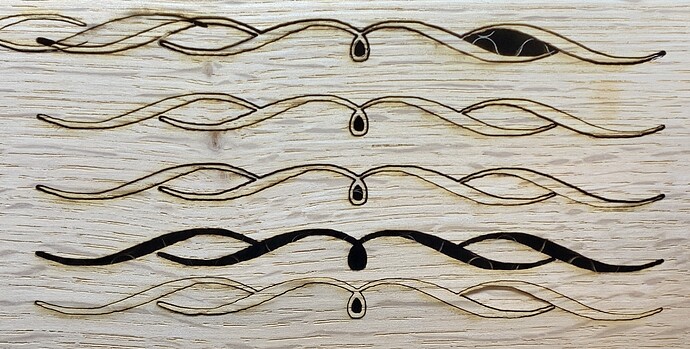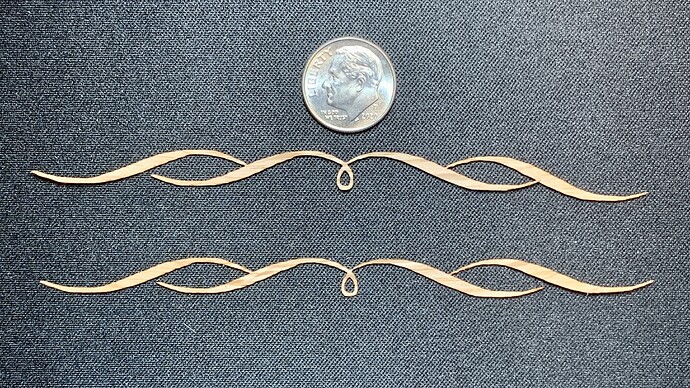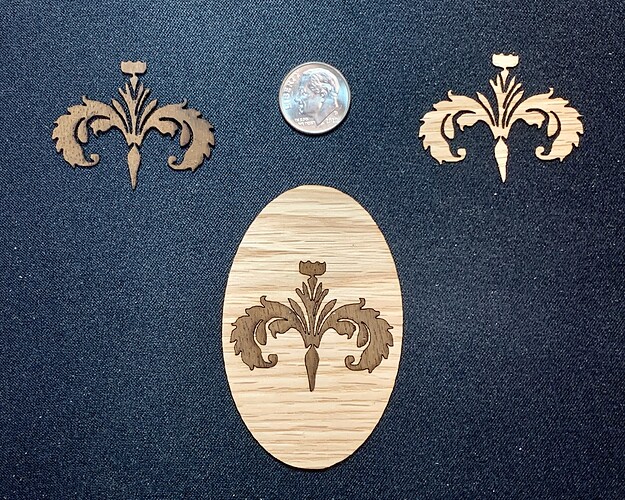Hi, I’m jumping in here as I haven’t seen any good laser cutting for marquetry forums.
One technique I’ve used for figuring our the kerf is to create a series of small squares, each varying by 0.001 in (or similar). Then you see which box fits in which hole and you have your answer. The typical kerf I’ve seen is 0.005 in, though of course it can vary depending on the exact material (thickiness mostly).
Another trick is to create 2 versions of the shape, flipping over to cut in a mirrorlike reversed orientation. Now you have a cork-n-bottle possibility, with the fit being very good. This will change the kerf allowance as it’s a bit wider.
Finally, I’ll note that some like to leave a bit of space and fill with something to give a bit of a line. Paul Schurch likes to do this and he taught doing this with same glue as you put under the veneer and some colored fill.
